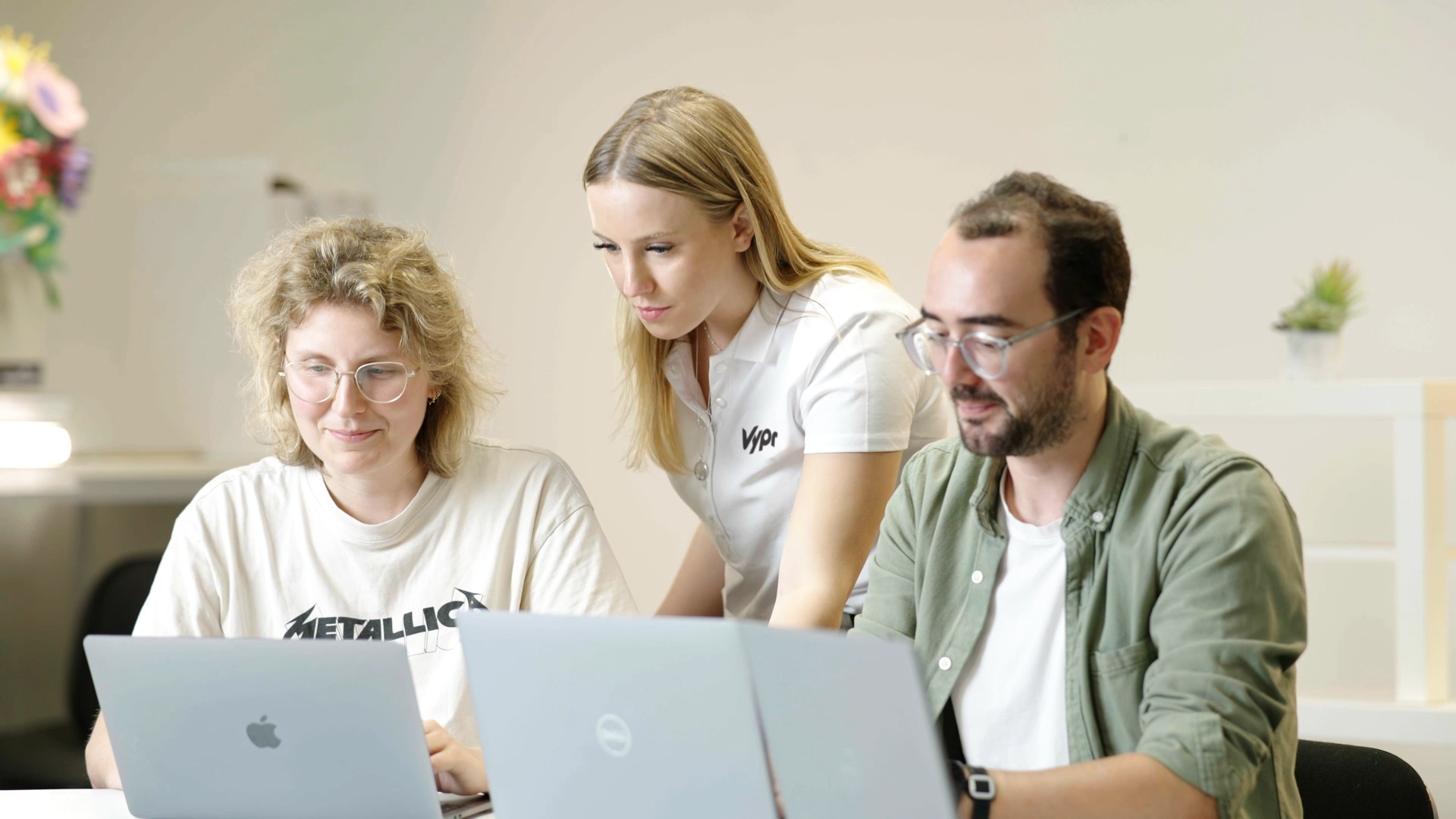The Importance of New Product Development (NPD)

New product development is deeply tied to the heart of innovation, fostering growth and securing a coveted position at the forefront of market trends.
Read on to learn more about the importance of new product development and why it’s a vital component of business growth and success.
What is New Product Development?
New product development (NPD) is creating a new product or improving an existing one to meet consumer expectations. It involves problem-solving, being creative, brand tracking and staying ahead of market trends.
Many companies go through this process to attract new consumers or satisfy existing consumers, whether they are manufacturing cars, video games or clothes.
Why New Product Development Matters
New product development matters because businesses need to stay relevant and keep a competitive edge in an ever-shifting market. Here are some key factors that affect its significance:
- Meeting Consumer Needs: With consumer preferences changing, businesses need to be able to adapt to preserve loyalty and brand success by analysing current trends and pouring their efforts into top-notch product design.
- Maintaining Innovation: Nothing is worse than a brand growing stale. Updating existing products or making use of groundbreaking idea generation helps you stay ahead of the competition.
- Securing Your Share of the Market: Staying fresh with an exciting new product keeps businesses visible and provides access to new markets. Securing your market share improves the perceived value of your brand.
- Boosts Revenue: New products create new opportunities to break out into a new market and secure a new consumer base. By creating innovative products, your business will unlock new revenue streams.
Competitive Intelligence for New Product Development
When new product development teams are trying to bring new creative products to market, competitive intelligence is a key component to making that work. Using agile methodologies, teams can quickly adapt to shifts in the market and competitor strategies.
Understanding your competitor’s strengths and weaknesses helps refine the product development stage. Insights can enable product development teams to make informed decisions, reduce risks and speed up the time it takes to bring new products to the market.
Consumer Feedback in Product Development
Assimilating consumer feedback into the product development process helps companies create products that genuinely solve consumer problems. Businesses can gain insight through reviews or focus groups rather than assuming what their consumers want.
Through consumer feedback, we can identify pain points and make more user-friendly designs. This also provides an opportunity to improve features that matter the most to consumers for new products.
Stages of the New Product Development Process
A successful new product development strategy involves a step-by-step process from idea generation all the way to a market-ready product launch.
Idea Generation
In order to effectively execute idea generation, you need to begin by identifying consumer needs and finding gaps in the market you could exploit.
With this analysis, businesses can better define their target market, tailor product ideas to meet their specific needs and ensure product ideas have a high chance of success.
Concept Development and Testing
In this next phase, ideas are refined into detailed concepts that are adjusted to market needs.
Developing a minimum viable product (MVP) allows businesses at the concept development stage to test functionality, appeal to investors and gather feedback from consumers. This is a necessary step to secure risk management and streamline the production process to make sure that it meets consumer expectations.
Prototyping and Designing
Prototyping and designing play a crucial role in evaluating a product’s market potential and making sure it successfully meets consumer needs.
By creating prototypes, businesses can test many factors of product success, recognise and mitigate any product design flaws and estimate manufacturing costs. Technological advancements such as 3D printing and 3D modelling techniques help streamline this process. These techniques also speed up research and development to refine the company’s product offerings.
Product Launch and Market Entry
The final stage of the process involves accelerating the launch of a new product. With this, businesses can gain a competitive edge over their competitors with similar products and possibly attract more investors.
A well-launched marketing strategy makes sure your product is delivered on time, generates enough hype and maximises the chance for success. By focusing on rapid market entry, companies can create a strong market presence and capitalise on up-and-coming trends.
This approach allows investors to identify fast-executing ventures that boost brand visibility while also demonstrating operational competency. A strategic and timely product launch is instrumental in creating new revenue streams and achieving business growth.
The Benefits of New Product Development
You’ll find that the benefits reinforce the importance of the new product development process and will contribute to the traction of your business.
Enhancing Market Competitiveness
A strong product development process helps businesses maintain a lead in the market by adapting to new market trends.
Through business analysis, companies can recognise possible gaps and create new products that meet evolving consumer needs. This method gives businesses a competitive edge and enhances competitiveness in the marketplace.
Meeting Changing Consumer Needs
Adjusting to ever-evolving client needs requires risk management and effective test marketing to make sure your new innovative product is a success.
By refining products based on consumer feedback and responding to market demands, businesses can improve resource allocation and cater directly to their target market. This reduces uncertainties and keeps the companies focused on attracting potential consumers and building a solid brand image as market leaders.
Driving Innovation and Growth
Companies that focus on bringing new products to market efficiently thrive on agile innovation. Using new technologies and simplified manufacturing processes allows companies to fine-tune the final product for their consumers.
The benefit of committing to progress is not only for growth, but keeping new product development a sustainable success as well.
Expanding Brand Loyalty and Recognition
When companies consistently bring new and exciting products to the market to address their consumers’ needs, they build consumer loyalty and trust. This strengthens brand reputation by showcasing the company’s adaptability and commitment to quality.
Satisfied consumers are more likely to associate high-quality products, reliability and innovation with the brand itself. As a result, matching your product ranges with consumers’ preferences enhances market visibility and recognition.
A positive feedback loop drives sustained success and enhances brand equity. Retaining consumers and attracting new audiences also display a continuous commitment to value delivery.
Diversifying Revenue Streams
Introducing new products through a well-thought-out product development lifecycle helps businesses pick up additional market share and increase revenue generation. Businesses can tap into unexplored markets and lessen their dependency on current offerings by serving a range of market needs.
This helps strengthen financial stability, bolster long-term growth and brand reputation.
Capitalising on Emerging Trends
Spotting new trends early is vital to staying competitive in a constantly changing market. During the concept development and product development stages, businesses can shape new products to fit what consumers are looking for.
Improving Consumer Satisfaction and Retention
New product development benefits businesses by meeting changing consumer expectations. By understanding consumer requirements, companies can create new products that solve problems or add value. If your products and services don’t add value, consumers will see very little reason to return to your brand.
Doing your due diligence will pay off in spades. If your consumers are happy and taken care of, they will willingly promote your brand instead of simply making purchases. Delivering what your consumer needs builds trust and loyalty, keeping your consumer base satisfied.
Boosting Profitability and Efficiency
Keeping your marketing strategy in line with consumer expectations is key to boosting profitability. When businesses track progress in different areas in their marketing strategy, they can polish and adjust tactics to improve efficiency.
This leads to better outcomes and a higher return on investment thanks to the effective use of resources.
Attracting Investment and Partnerships
A well-executed new product development strategy can be a major draw for attracting shareholders and potential business partners. Demonstrating your company’s clear strategy, new product offerings, and ability to meet market demands brings a sense of confidence in your business.
Challenges in New Product Development
While the benefits of new product development sound attractive, there are also some challenges to watch out for.
Managing Uncertainty and Risk
As with any business venture, there’s always some risk that comes with taking the chance. New product development usually involves having to effectively navigate market uncertainties and technological risks.
Companies must develop strategies to minimise potential risks and make better decisions. Being proactive reduces the likelihood of new products failing and makes the production process much smoother.
Balancing Innovation with Market Demand
Finding the right balance between innovative ideas and actual market needs is important to achieving success. Stressing innovation without considering consumer demand can lead to a project going astray.
The opposite is also true. Focusing on only market demands stifles creativity. Understanding both is necessary to succeed in product development.
Overcoming Resource and Budget Constraints
Overcoming capped resources and tight budgets requires effective management. Limited financial and human resources can be a detriment to your new or existing products. Task prioritisation, efficient resource allocation, and searching for potential partners can help you overcome these constraints and make sure your project stays on track and within budget.
Navigating Competitive Pressures
The presence of competitors has a great impact on developing innovative products. Businesses must continuously monitor competitors’ activities and track their market positioning to keep ahead of them.
To maintain that competitive edge, strategic adjustments, differentiation, and the ability to market faster are all essential to reduce the effect of these challenges.
Vypr: Reap the Advantages of New Product Development
Vypr is the world’s leading product intelligence platform that enables businesses to rapidly understand changing consumer behaviour through fast, cost-effective consumer insight.
Now that you’re no longer left wondering what the importance of new product development is, you can take action to enhance your product.
With Vypr, you can access reliable real-time data, track shifting trends and collect valuable feedback from your audience. Using this data, you can fast-track the development of new products, exceed consumer expectations and stay competitive by making data-driven decisions.
Harness the power of robust product intelligence solutions and streamline your (NPD) new product development process. Try Vypr for free now.







